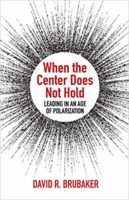
The first two years of Pastor Nate’s ministry at Historic Downtown were, as he put it, “Awesome!” Attendance and giving reversed their 30-year slide, and younger families and singles began to reappear in the pews. Most members attributed the turnaround to Pastor Nate’s compelling sermons and charismatic personality. One long-term member enthused, “This is the first time I’ve wished a minister would keep preaching after 20 minutes!”
By the third year, troubling anecdotes about Pastor Nate began to emerge, primarily from those connected with congregational staff members. One story concerned a young female staff member who resigned because she felt “demeaned” by Pastor Nate. Another involved a male associate minister whom Pastor Nate had berated in deeply personal and humiliating ways in front of the entire 10-person staff, allegedly because the associate had forgotten to give Pastor Nate proper credit for the idea of initiating a new program for young adults in the congregation.
Despite the congregational growth and the development of new programs, some members of Historic Downtown began to question Pastor Nate’s leadership. Why was he constantly calling attention to himself while diminishing others? Was it appropriate for him to demand “loyalty” to himself rather than the congregation or to God? Were rumors about his demeaning of staff members true? What did all this mean for the congregation?
Others rushed to defend Pastor Nate: “Sure, he can be brusque on occasion, but look how the congregation is growing!” The members of the search committee that recommended calling Pastor Nate were particularly vigorous in defending their decision. After decades of decline, Historic Downtown needed a “strong leader” to turn things around. It was time for folks to either get on board or get out of the way, as Pastor Nate was the one now setting the direction for the congregation.
For most members, however, the hubbub over Pastor Nate’s leadership seemed like a lot of background noise. They liked the worship service and their church friends and were not sure which rumors to believe.
This fictionalized story illustrates the four roles that tend to emerge in a congregation when there is a bully in the pulpit—or the pews—the Bully, the Victims, the Enablers, the Bystanders, and the System:
The Bully
Thom S. Rainer developed a list of “Nine Traits of Church Bullies,” including “intense and emotional personalities” and “personal and self-serving agendas.” Congregational bullies, whether in the pulpit or the pews, “create chaos and wreak havoc,” in large part by insisting everything must go their way. According to Rainer, “any person or ministry or program that is contrary to their perceived ideal church must be eliminated.” There is also significant research evidence that those who bully as adults may have been bullied or victimized themselves as children .
The Victims
Those victimized by bullies are the individuals who are perceived as blocking their agenda…or simply those upon whom the bully chooses to direct their wrath. Tragically, those who are perceived as “different” or “weaker” members of the social group are often the target of a bully’s demeaning behavior. While most adults assume that bullying behavior and victim responses are primarily an issue among children in schools, workplace bullying is also a major concern. According to a 2017 study by the Workplace Bullying Institute, 61% of Americans are aware of bullying in the workplace and 19% have themselves been victims of bullying.
The Enablers
Those who enable a bully to continue their campaign of terror fall, in my experience, into two categories—the “true believers” and the “craven opportunists.” True believers are those who are so enamored with the leadership style and perceived achievements of the bully that they will stand with the bully until the end. Craven opportunists, on the other hand, see the bully’s behavior as a lamentable but necessary means to an end. Their own moral relativism allows them to ally themselves with the bully to achieve the desired end. (Such opportunists are also the first to abandon the bully when things start to go south, as they inevitably do.)
The Bystanders
The largest part of any social system where bullying is occurring, including a congregation, is generally the group known as “bystanders.” Bystanders often experience fear when witnessing the bullying event and guilt afterwards (for failing to intervene). Research suggests that a single bystander is more likely to intervene than members of a group, because of the phenomenon called “diffusion of responsibility.” A number of organizations now offer “bystander training” to equip people with the skills and awareness to intervene effectively when they witness bullying or harassment.
The System
The congregational system itself determines to a large degree whether bullying behavior is tolerated or confronted. A key systemic variable is the congregation’s culture around authority and conflict. To what degree are top leaders seen as “ultimate authority figures” and to what degree are there accountability mechanisms for leaders at all levels? Is disagreement with top leaders permitted or is it squelched in favor of absolute loyalty? Some congregational systems enable bullying behavior and others actively deter it.
Although I have used a senior minister to illustrate the bullying phenomenon, bullies in the pews are actually more common, especially in small and medium-size congregations, where ministers are generally granted less authority than in larger groups. Antagonists in the Church, a classic—and contested—book by Kenneth Haugk, offers a variety of strategies for dealing with such individuals.
How might congregations respond to and/or deter bullying behavior?
- Don’t assume that every instance of inappropriate behavior necessarily implies a bully in the pulpit or the pews. It’s the pattern of behavior over time that confirms the presence of a bully.
- Consider developing a “congregational covenant” that states positively the behaviors that are desired in your congregation, and then develop strategies to respond when such commitments are violated by leaders or members.
- Design an ongoing conversation about the “leadership culture” in your congregation, and what your congregation envisions in terms of both authority and accountability. Establish the norm that “with authority goes accountability,” backed by genuine accountability mechanisms.
Bullying behavior is toxic, destructive, and unacceptable, whether from the pulpit or the pews. Preparing congregational members to identify and intervene when they see such behaviors is a first step. Changing the congregational culture so that members and leaders instinctively deter such behavior is more important yet.
David Brubaker has consulted with organizations and congregations in the U.S. and a dozen other countries on organizational development and conflict transformation. He is the author of Promise and Peril, on managing change and conflict in congregations, and When the Center Does Not Hold, on leading in an age of polarization. David recently retired from his role as Dean of the School of Social Sciences and Professions at Eastern Mennonite University, and is now a Professor Emeritus of Organizational Studies.


